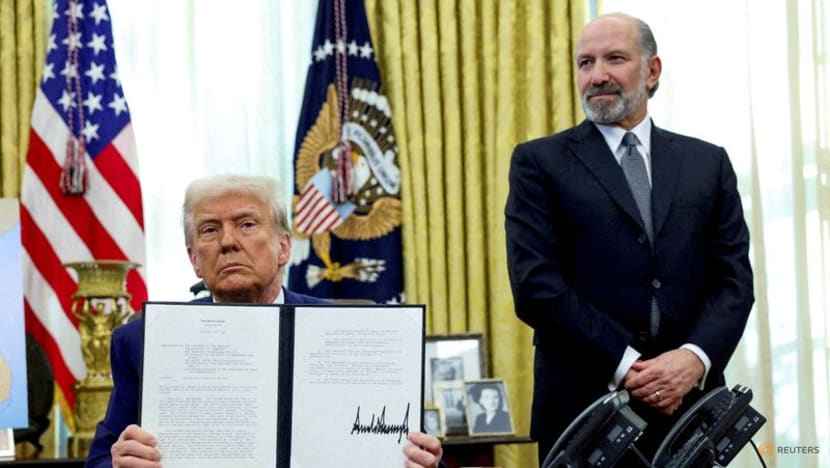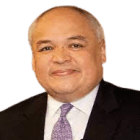Commentary: Nightmare scenario as Trump’s tariffs head for Asia
With US President Donald Trump’s reciprocal tariffs about to reshape global trade, a coordinated response is the best way forward, say Steven R Okun and Thurgood Marshall Jr. Â


This audio is generated by an AI tool.
SINGAPORE: On Wednesday (Apr 2), the Trump administration has promised to roll out a slew of reciprocal tariffs, in what United States President Donald Trump has described as “Liberation Day”.
The destruction of the international trading system coupled with a global tariff war were once considered the nightmare outcome in geopolitical scenario planning. Now, it’s the base case.
Countries across the Asia-Pacific, particularly in Southeast Asia, are bracing for impact, "tarrified" of what's to come.
Malaysia, Thailand and Vietnam are widely expected to be among the hardest hit with tariffs, having been identified by Treasury Secretary Scott Bessent as members of the "Dirty 15" trading partners. These countries’ outsized trade surpluses with the US place them on that list.
For weeks, leaders around the world have made their case to Mr Trump and his administration for exemptions.
There is little to suggest their efforts will pay off.
Since his return to the White House, Mr Trump has rewritten the rules of American politics and international trade, dismissing multilateral norms. CEOs, economists and trade experts have warned that his sweeping tariffs could slow economic growth, drive up consumer prices, tank the stock market and strain household budgets, all to no avail.
Tariffs have a place in trade policy and can and should be used in a targeted and limited way when justified. However, the tsunami of tariffs approaching the Asia-Pacific could ultimately undermine US economic interests.
WEALTH AND RESPECT, BUT AT WHAT COST?
Every country will be judged by the US on their bilateral trade individually, with tariffs imposed accordingly, starting on Apr 2. But the policy goes beyond simple reciprocity.
The US Trade Representative will evaluate each country’s trade practices - weighing most favoured nation rates, value-added tax gaps, non-tariff barriers, currency manipulation and transshipment tactics - to determine the severity of tariffs and penalties.
The greater the imbalance or perceived unfair advantage, the steeper the cost.
As President Trump sees it, every country in the world takes advantage of the US and the new tariffs will win back the money and respect it deserves.
Deborah Elms, head of trade policy at the Hinrich Foundation in Singapore, warns that President Trump is taking a high-stakes gamble with his America First Trade Policy.
“Trump wields tariffs as a blunt instrument to fix everything at once - manufacturing decline, trade imbalances and power shifts,” she told us. “That can’t be done because each of those goals requires a different trade strategy, and this is not it,” she added.
Financial markets have already begun to show signs of instability.
Taimur Baig, managing director and chief economist at DBS Bank, believes the administration will tolerate a degree of market pain to carry out its purported policy goals. But there could be a limit.
“A sharp market correction or stagflationary developments would likely force Trump’s hand to temper his agenda,” he said.
SCRAMBLE FOR EXEMPTIONS
With tariffs looming, governments have rushed to negotiate.
Trade delegations went to Washington, and multibillion-dollar deals were tabled, either to invest in the US or to purchase its products, all in an attempt to avoid Trump’s tariffs.
Vietnam - which was labelled a currency manipulator during Trump 1.0 and whose trade surplus with the US surged to a new record at over US$123 billion last year - has offered US$4 billion in energy and minerals deals with US firms.
India’s commerce and industry minister made multiple trips to the US to work out key issues, with the nation reportedly open to cutting tariffs on more than half of US imports worth US$23 billion.
Japan’s trade minister has likewise lobbied Washington for exemptions, with automakers warning that US tariffs could lead to shifts in production. South Korea has already faced a 25 per cent tariff on steel and aluminum. It has activated an emergency strategy and sent its industry minister to Washington, seeking relief.
With the auto tariffs announced on Mar 26, efforts by Japan to highlight economic damage came to naught as Trump imposed duties anyway.
PUSHING BACK
With the new US tariffs looming, most countries in the region appear to be overlooking one strategy - pushing back.
A country negotiating one-on-one with the US rarely takes a maximalist approach with Mr Trump, because in bilateral settings, the US has all the cards.
Individually, a given country may not have the power to create effective resistance. But collectively, they might.
When he chooses, Mr Trump has no trouble pivoting, including because of sirens from Wall Street or to simplify execution.
He delayed tariffs on low-value Chinese imports after retailers warned of consumer price shocks and implementation challenges that saw more than a million packages piled up at ports of entry.
“The administration has signalled that rather than imposing universal baseline tariffs, it will focus at least for now on the 'Dirty 15' countries with which the US has the highest trade deficits and largest trade volumes,” Barbara Weisel, former Assistant US Trade Representative for Southeast Asia, explained.
“Those 15 countries represent the bulk of what it sees as the problem. And as a practical matter, negotiating with over 100 countries simultaneously is infeasible,” she added.
COLLECTIVE RESISTANCE
Mr Trump’s tariff actions are unlikely to stop on Apr 2. He has already indicated plans to impose new tariffs on semiconductors and pharmaceutical imports, which will further upend global trade.
For now, the administration appears committed to this course. If inflation rises, stocks tumble or supply chains fracture - all likely - the pressure will mount. That may come in the form of market turmoil, public anger or coordinated global retaliation.
At present, however, the world finds itself trapped in the “prisoner’s dilemma”. While collective action would benefit all, each country has strong incentive to protect itself. That’s precisely what has happened - and exactly what Mr Trump counted on.
Mr Trump has long favoured bilateral deals, which he believes maximise US leverage. He disdains the existing multilateral system, despite it allowing the US to become the world’s dominant economy, and which would permit the US to remain such. His threats to the European Union and Canada should they join forces on counter-tariffs make clear why he will do what’s needed to keep countries divided. Â
Businesses, investors and governments are “tarrified” - trapped between the fear of economic fallout and the cost of pushing back.
While some wish the April 2 tariffs will not be as severe as expected given teetering markets, and one never knows who Mr Trump will listen to before making his final decision, hope is not a strategy.
In this era, with the market guardrail failing to hold on its own so far, standing together will be the only way to bargain with an America First US.Â
Steven R Okun and Thurgood Marshall Jr served in the Clinton administration as Deputy General Counsel at the Department of Transportation and White House Cabinet Secretary, respectively. Mr Okun serves as CEO of APAC Advisors in Singapore. Mr Marshall practices law in Washington, DC.


















